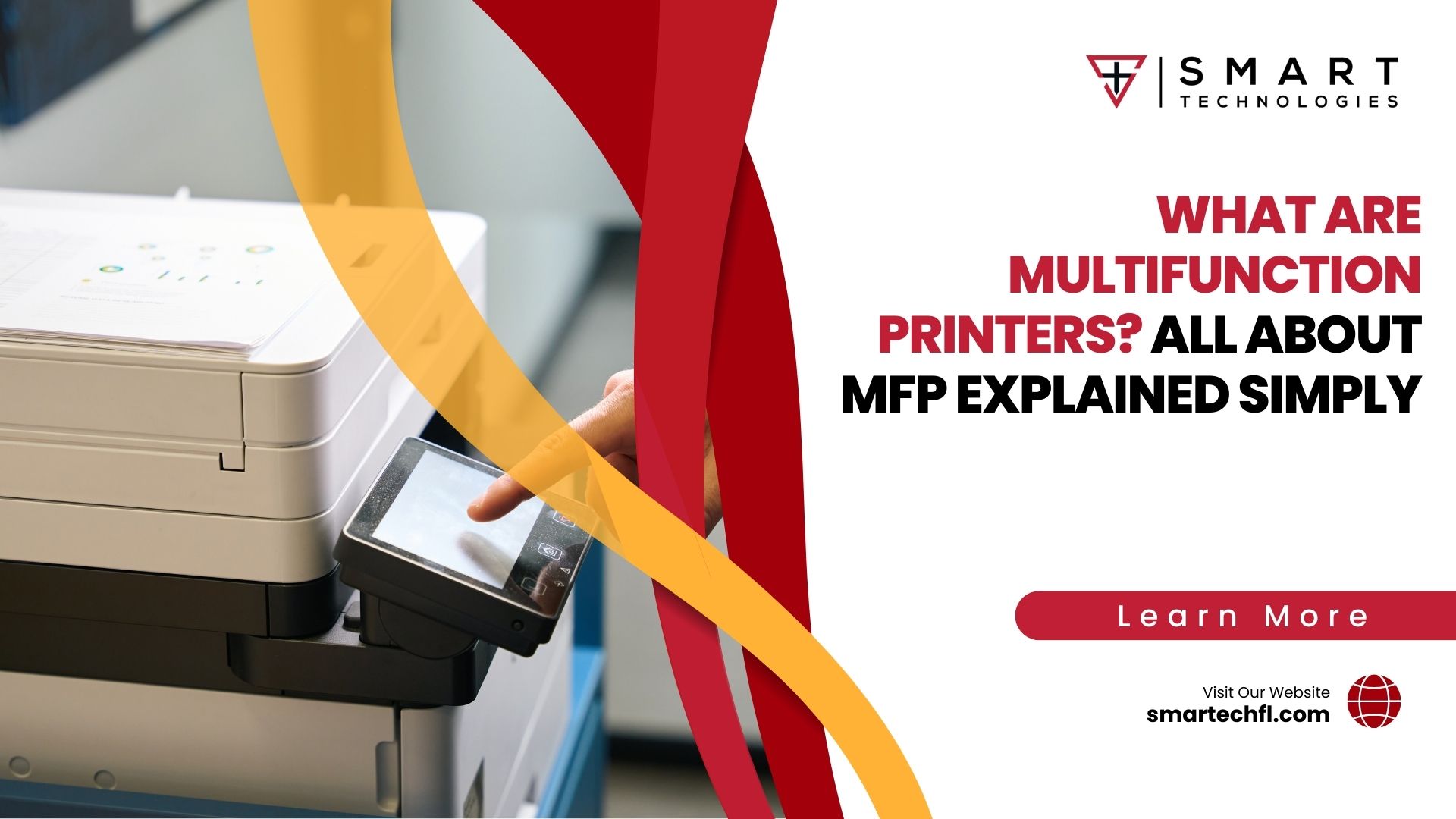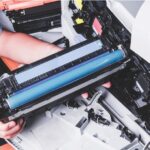How Long Does a Printer Last and How to Extend Its Life
How Long Does a Printer Last
Imagine you important documents unprinted, and frustration starts because your trusty printer is not working. Printers for home and office, are essential for transforming digital files into tangible documents. But like any machine, they aren’t built to last forever. Dealing with a printer breakdown can be a real headache. This article explains into the world of printer longevity, exploring the average lifespan of these devices and unpacking practical strategies to extend their functionality.
In other words, we’ll shed light on how long you can expect your printer to faithfully serve you, and equip you with the knowledge to keep it running smoothly for as long as possible.
For those facing the issue of buying a new printer, this article will also provide valuable insights to guide your decision-making process.
What is Printer Lifespan
The Average Lifespan of a Printer

Printers have a finite lifespan. This refers to the average amount of time a printer can function optimally before experiencing significant performance degradation or hardware failure. Generally speaking, printers can work smoothly for anywhere between 3 and 5 years. However, it’s important to remember that this is just a figure. Several factors can influence how long your printer faithfully serves you.
Inkjet vs. Laser Printer Lifespan
The type of printer you own plays a significant role in its lifespan. Inkjet printers, known for their affordability and excellent photo printing capabilities, tend to have a shorter lifespan compared to their laser counterparts. Laser printers, often favored for their speed and crisp text output, are generally built to withstand heavier workloads and can last longer.
Factors Affecting Printer Lifespan
The factors influencing a printer’s lifespan are multifaceted. Here’s a breakdown of the key points:
- Printer Type (Inkjet, Laser): As mentioned earlier, inkjet printers typically have a shorter lifespan than laser printers.
- Brand and Model Quality: Reputable brands known for manufacturing high-quality printers will naturally offer products with a longer lifespan.
- Printing Frequency: The more you use your printer, the more wear and tear it experiences. Frequent printing can put a strain on internal components and shorten its lifespan.
- Proper Maintenance and Cleaning: Regular cleaning and maintenance, including cleaning the print heads and cartridges, helps prevent clogs and malfunctions, extending the printer’s lifespan.
- Environmental Factors (Dust, Humidity): Dust and humidity can wreak havoc on delicate printer components. Keeping your printer in a clean, dry environment is essential for optimal performance and longevity.
By understanding these factors and implementing preventative measures, you can significantly extend the lifespan of your printer and avoid the hassles associated with frequent printer replacements.
Signs Your Printer Needs Replacing
Here’s a breakdown of key indicators that your once reliable printer might be nearing the end of its lifespan and it’s time to consider a replacement:

Printing Quality Issues
Have your once-vibrant printouts become a pale shadow of their former glory? Are you noticing streaks, smudges, or faded colors marring your documents? These print quality issues could be a sign of clogged print heads, failing cartridges, or even a malfunctioning printer itself. Inconsistent ink application, where areas of your prints appear lighter or patchy, can also be a red flag.
Performance Issues
Is your printer suddenly lagging behind, taking an eternity to churn out even simple documents? A noticeable slow printing speed compared to its original performance can be a sign of internal wear and tear. Increased noise during operation, with grinding or rattling sounds, might also indicate failing components. Frequent error messages displayed on the screen are another cause for concern, potentially pointing to hardware or software issues.
Cost Considerations
Is the cost of keeping your printer running starting to outweigh the benefits? When replacement ink cartridges become excessively expensive, especially for high-volume printing, it might be more economical to invest in a new, more ink-efficient model. Similarly, if repairs are becoming more frequent and costly, it’s time to weigh the repair expense against the price of a new printer. Difficulty finding compatible ink cartridges for older models can also signal it’s time for an upgrade.
Outdated Features
New printer models boast a concept of advanced features that your older model might lack. For instance, wireless printing capabilities allow you to send documents to print directly from your smartphone or tablet, eliminating the need for a physical connection.
Mobile compatibility lets you manage print jobs on the go, a feature that can be a real game-changer for busy professionals. If your current printer lacks these functionalities, it might be time to consider a new model that better fits your evolving needs.
By recognizing these warning signs, you can avoid the frustration of a complete printer breakdown and make an informed decision about when to replace your printer.
Extending Your Printer’s Lifespan
By implementing preventative maintenance practices, you can significantly extend the functionality of your printer and squeeze out more mileage before needing a replacement.
Think preventative, not reactive! Regular maintenance helps identify and address minor issues before they turn into major problems.
Here are some key strategies to extend the lifespan of your printer:
Regular Cleaning
The heart of any printer is the print head, responsible for meticulously laying down ink onto the paper. Over time, these delicate components can become clogged with dried ink particles, leading to poor print quality. Regular cleaning, particularly of the print heads and cartridges, is crucial for optimal performance and longevity.

Here’s how to clean your printer:
- Consult your user manual: Different printer models may have specific cleaning procedures. Refer to your user manual for detailed instructions to ensure proper cleaning techniques.
- Avoid harsh chemicals: Stick to the recommended cleaning solutions or use a damp, lint-free cloth to avoid damaging sensitive components.
- Cleaning frequency: The frequency of cleaning depends on your printing habits. If you use your printer frequently, consider cleaning it every month or two. For occasional users, cleaning every few months might suffice.
By following these simple steps, you can keep your printer’s print heads clear and functioning optimally, extending its lifespan.
Using High-Quality Ink
The ink you use in your printer plays a vital role in its performance and longevity. Opting for genuine ink cartridges or high-quality refills from reputable brands ensures compatibility and optimal print quality.
Here’s why using high-quality ink matters:
- Protects your printer: Low-quality ink can clog print heads and damage internal components, leading to costly repairs or premature printer failure.
- Consistent results: Genuine or high-quality ink cartridges deliver consistent, predictable print results, minimizing the risk of wasted paper and frustrating reprints.
While generic or refilled cartridges might seem like a cost-effective option in the short term, the potential damage they can cause to your printer can outweigh the initial savings.
Proper Printing Habits
The way you use your printer can also impact its lifespan. Here are some smart printing habits to consider:
- Print only what’s necessary: Avoid printing unnecessary documents or emails. Consider reviewing documents on screen or saving them digitally whenever possible.
- Optimize print settings: When printing drafts or less critical documents, utilize the “draft mode” setting. This reduces ink usage and minimizes wear and tear on the print head.
- Reserve high-quality printing for important documents: For presentations, photos, or documents requiring sharp visuals, use the highest quality print settings.
By adopting these habits, you can not only save on ink costs but also extend the lifespan of your printer.
Maintaining Optimal Environment
Keep your printer in a cool, dry, and dust-free environment. Extreme temperatures and humidity can damage delicate components and shorten the lifespan of your printer.
Regular Maintenance by Professionals
For complex printers or those used in high-volume printing environments, consider scheduling professional cleaning and maintenance at regular intervals. Trained technicians can identify potential issues before they become major problems, helping you to maximize the lifespan of your investment.

By implementing these preventative measures, troubleshooting, printer repair and toner cartridge maintenance can keep your printer running smoothly for years to come, saving your money and frustration in the long run.
Making the Replacement Decision
Facing a printer on the fritz can be a frustrating decision point: repair or replace? There’s no one-size-fits-all answer, and the best course of action hinges on several key factors.
Repair Costs vs. Replacement Costs
The first step is to weigh the repair costs against the price of a new printer. Consider the nature of the repairs. Will they address the underlying problem and ensure long-term functionality, or are they merely a temporary fix? Reliable repair estimates can be difficult to obtain upfront, so a little investigative work might be required.
For instance, some online resources and manufacturer websites offer repair cost calculators that can provide estimate based on your printer model and the reported issue.
Printing Needs and Frequency
Analyze your current printing needs and how often you use your printer. If you’re a high-volume printer user, upgrading to a newer model with faster print speeds and higher page yield cartridges might be a more cost-effective solution in the long run. Conversely, for occasional home use, a basic printer might suffice, and repairs might be a more economical option.
Technological Advancements
Don’t underestimate the scope of technological advancements offered by newer printer models. Features like wireless printing, allowing you to send documents directly from your smartphone or tablet, can significantly enhance convenience. Mobile compatibility lets you manage print jobs on the go, a feature that can be a real time-saver for busy professionals.
Upgrading to a newer model with these functionalities might be a worthwhile investment, particularly if your current printer is lacking in these areas.
By carefully considering these factors, you can make an informed decision about whether to breathe new life into your existing printer with repairs or embrace the benefits of a new device that better fits your evolving needs.
What People Also Ask
How often should I clean my printer?
The frequency of cleaning depends on how often you use your printer. For frequent users, monthly or bi-monthly cleanings are recommended. Occasional users can get by with cleaning every few months. Consult your user manual for specific cleaning instructions for your printer model.
Are there any warning signs before my printer breaks down?
Absolutely! Refer to the “Signs Your Printer Needs Replacing” section of this article for a detailed breakdown of warning signs to watch out for, such as poor print quality, slow printing speed, and frequent error messages.
Is it better to buy a new printer or refill ink cartridges?
This depends on the factors mentioned in the “Making the Replacement Decision” section. If your printer is nearing the end of its lifespan and repairs are expensive, a new printer might be a better option. However, for a well-functioning printer, using high-quality refilled cartridges can be a cost-effective alternative to genuine ink cartridges.
How can I dispose of old printer cartridges responsibly?
Many manufacturers and retailers offer recycling programs for old printer cartridges. Check with your printer manufacturer or local office supply store to find out about responsible disposal options in your area.
Conclusion
With proper care and maintenance, your printer can faithfully serve you for years to come. However, all good things must come to an end. By understanding the factors influencing a printer’s lifespan and the signs of decline, you’ll be well-equipped to make informed decisions about repairs, replacements, and ultimately, keeping your printing needs met.
Remember, a little preventative maintenance can go a long way in maximizing the lifespan of your printer and saving you money in the long run.
You can contact us by phone, email, or by visiting our offices:
- Phone: (386) 261-8323
- Email: contact@smarttechfl.com
- Address: 771 Fentress Blvd. #10, Daytona Beach, FL 32114











